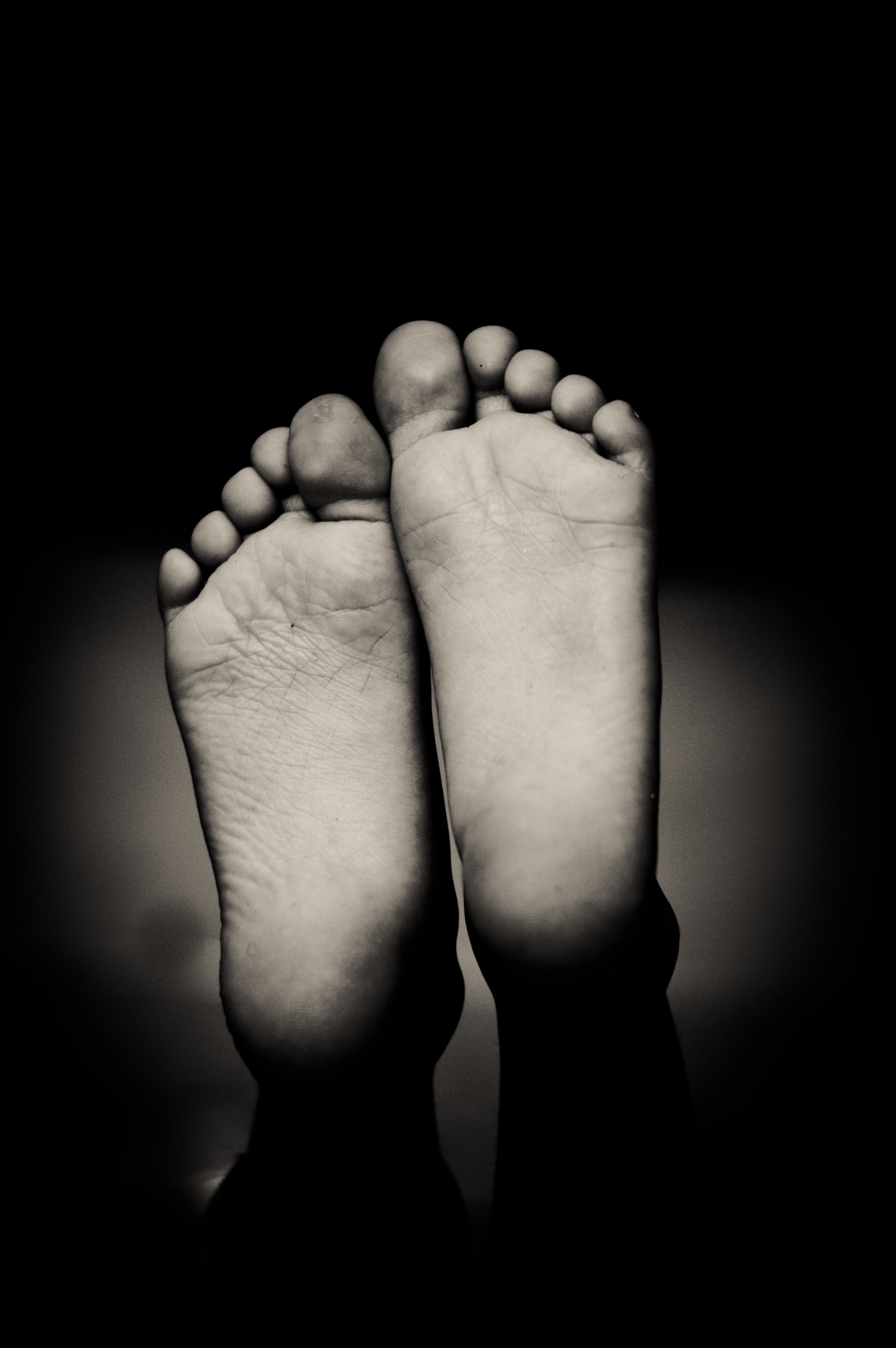What’s a flat foot?
Our feet and our entire body keep changing. If we eat too much, we get fat; if we don’t exercise, we get weak; aging changes everything.
The 26 bones that give our feet structure depend on semi-elastic bands of connective tissue called ligaments to keep them together and nested against each other. Ligaments are very good at resisting short-term, forceful stretches but are susceptible to long-term stretches that make them longer and looser (e.g. prolonged standing on hard floors).
As the ligaments get looser, they can’t hold the bones together like they used to, so the arches and general structure of the foot slump. As the structure slumps closer to the floor, foot function becomes abnormal. The foot will feel more fatigued in the early stages, then develop pain and/or deformities as the altered function causes progressive tissue damage.
Some people are born with loose ligaments and have flat feet as a child. Many people will have a good arch structure as a child but will stretch out their ligaments as time goes on.
What are the causes of the flat feet?
Many people who have flat feet were born with it. All mobile functions such as walking, running, etc. are possible with flat feet. However, the flexibility and mobility of the feet can get affected with increasing age. People with severely pronated feet are predisposed to straining the tibialis posterior tendon on the inside of the ankle as it tries to resist this movement. With time, the tendon can stretch, tear or rupture allowing the flat foot to worsen. Injury/trauma to the rear foot can result in an abnormal position or arthritis and cause a flat foot. There are some medical conditions (e.g. arthritis, gout, diabetes) that can predispose to inflammation of the tendon or arthritis of the major joints of the rear foot which can result in flat feet.
Watch out for common signs and symptoms
- A low/ flat arch
- Pain/discomfort in the foot, knee, calf muscles, back, or the neck
- Associated deformities (e.g. bunions, hammertoes, etc.)
- Difficulty in finding comfortable shoes
- Difficulty in walking/running
- Stiffness in the foot
- Corn / callus formation
Diagnosis
Clinical examination and obtaining detailed patient history help in the correct diagnosis. X-rays help to evaluate the extent of the deformity and any arthritis or deformity within the joint. Specialist scans help to evaluate the tendons and joints. A detailed gait analysis can help to diagnose the contributing factors toward flat feet.
Management
In many cases, conservative treatments are sufficient to resolve the symptoms and prevent tendon damage. However, rigid or painful flat feet require evaluation by a foot specialist.
The treatment depends on the cause of the flat feet. For tarsal coalition, treatment starts with rest and possibly a cast. If this fails to improve the pain, surgery may be necessary. For problems with the posterior tibial tendon, treatment may start with rest, anti-inflammatory medications, and shoe inserts or ankle braces. In more advanced cases, surgery may be needed to clean or repair the tendon or fuse some of the joints of the foot into a corrected position.
Flat feet in older adults can be treated with pain relievers, customized orthotics, and sometimes surgery.
Prevention
Most cases are not preventable.
Pain Management
There are several things that you can do to try and relieve your symptoms:
- Wear good-fitting shoes
- Perform exercises to keep the muscles flexible and strong
- Avoid high heels
- Wear a pad over any prominent deformities
You can also visit a foot specialist if the above remedies do not help in subsiding the pain
Role of the Orthotics in the management of flat foot
How your feet load during the process of walking, can place increased stress on your feet. This loading process can be controlled through the usage of customized shoe orthotics/inserts (customized orthotics). Customized orthotics help reduce discomfort but are unlikely to resolve any established deformity. In acute cases, a period of immobilization may be required, and in severe cases may need an ankle-foot orthosis.
Non-symptomatic, flexible flat feet do not require treatment. If you have pain due to flexible flat feet, a customized orthotic (arch-supporting insole/insert in the shoe) can bring relief.
With the increased interest in running, many shoe stores carry shoes for normal feet and pronated feet. The shoes designed for pronated feet make long-distance running easier and less tiring because they correct for the abnormality.

